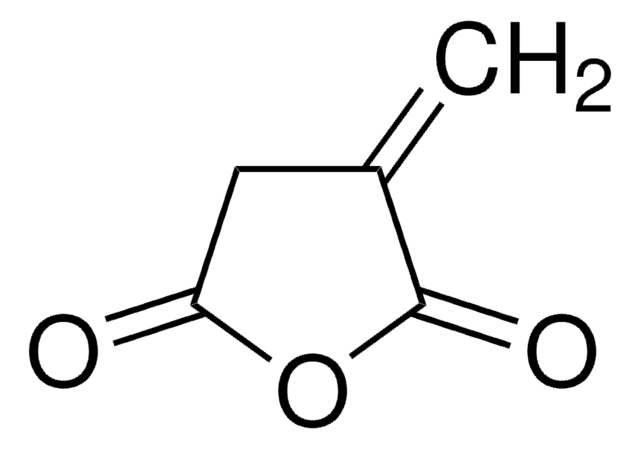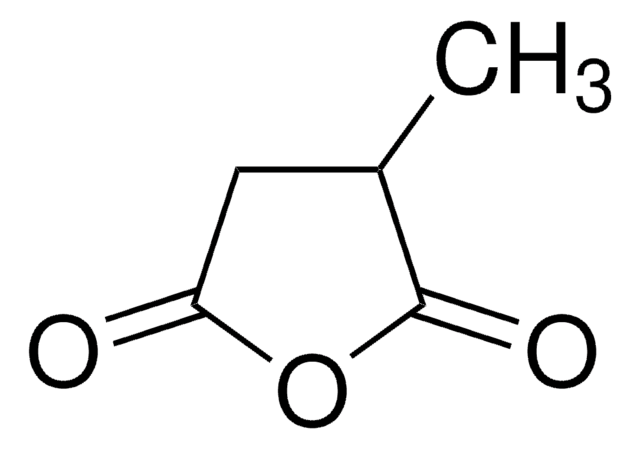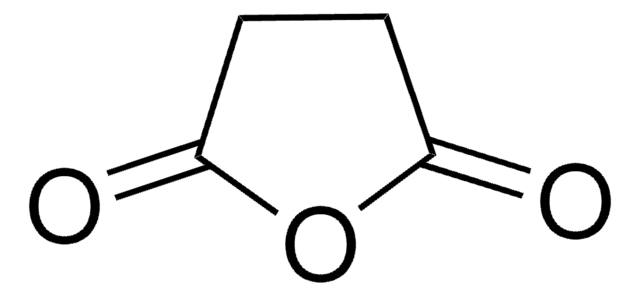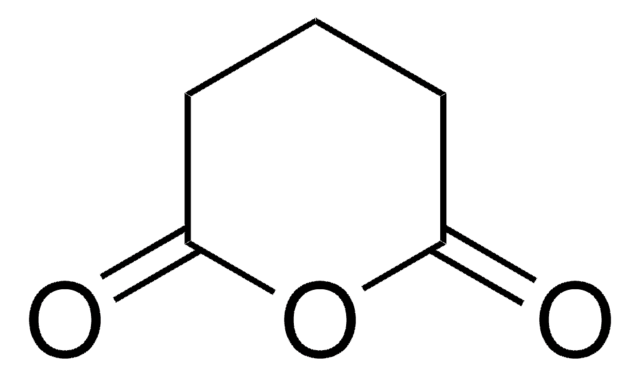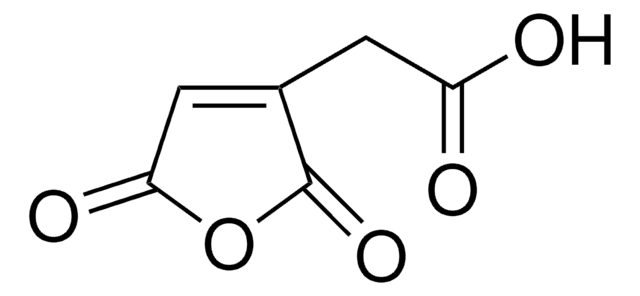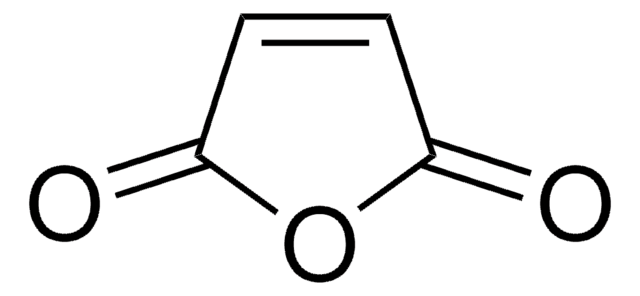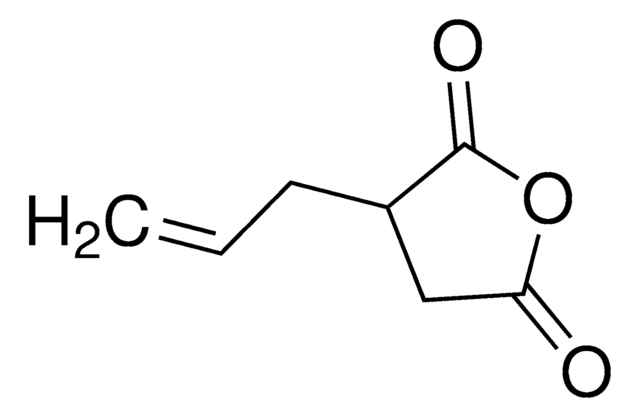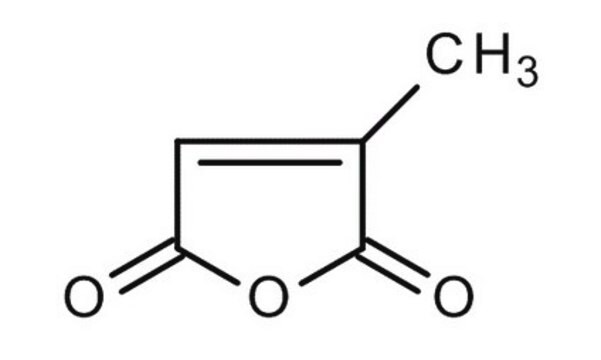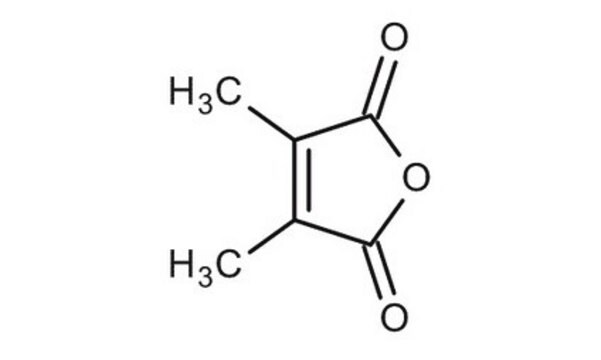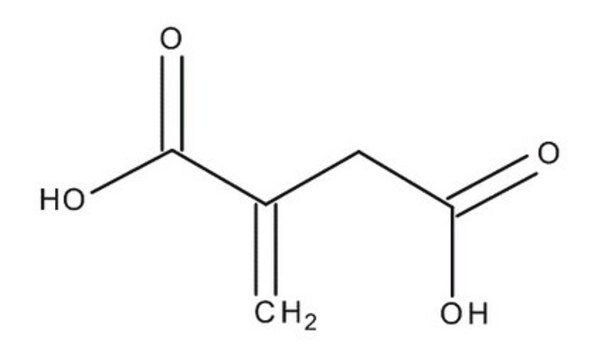125318
Citraconic anhydride
98%
Synonym(s):
2-Methylmaleic anhydride, 3-Methyl-2,5-furandione, Citraconic acid anhydride, Methylmaleic anhydride, Monomethylmaleic anhydride
About This Item
Recommended Products
vapor density
4 (vs air)
Quality Level
Assay
98%
form
liquid
refractive index
n20/D 1.471 (lit.)
bp
213-214 °C (lit.)
mp
6-10 °C (lit.)
density
1.247 g/mL at 25 °C (lit.)
SMILES string
CC1=CC(=O)OC1=O
InChI
1S/C5H4O3/c1-3-2-4(6)8-5(3)7/h2H,1H3
InChI key
AYKYXWQEBUNJCN-UHFFFAOYSA-N
Looking for similar products? Visit Product Comparison Guide
Related Categories
General description
Application
- As an electrolyte additive for high-temperature pouch lithium-ion batteries. Citraconic anhydride reduces the interfacial impedance of pouch cells during high-temperature storage and enhances their stability.
- As a pH-sensitive linker to surface functionalization of biomolecules used in drug delivery systems. The high pH sensitivity of citraconic anhydride conjugates is attributed to the presence of a double bond that restricts the separation between the amide and carboxylic acid groups.
- As a reagent to synthesize new thiopyrano[2,3-d][1,3]thiazole derivatives via hetero-Diels–Alder reactions. These thiopyrano derivatives exhibit diverse biological activities such as anticancer, antiviral, and antitrypanosomal.
- As a co-monomer in the ring-opening polymerization with d-xylose 3,5-anhydrosugar derivative to form novel sugar-derived polyesters, with up to 100% renewable content. This can serve as a sustainable feedstock for polymer synthesis.
Signal Word
Danger
Hazard Statements
Precautionary Statements
Hazard Classifications
Eye Dam. 1 - Resp. Sens. 1 - Skin Corr. 1B - Skin Sens. 1
Storage Class Code
8A - Combustible corrosive hazardous materials
WGK
WGK 3
Flash Point(F)
231.8 °F - closed cup
Flash Point(C)
111 °C - closed cup
Personal Protective Equipment
Choose from one of the most recent versions:
Already Own This Product?
Find documentation for the products that you have recently purchased in the Document Library.
Customers Also Viewed
Our team of scientists has experience in all areas of research including Life Science, Material Science, Chemical Synthesis, Chromatography, Analytical and many others.
Contact Technical Service